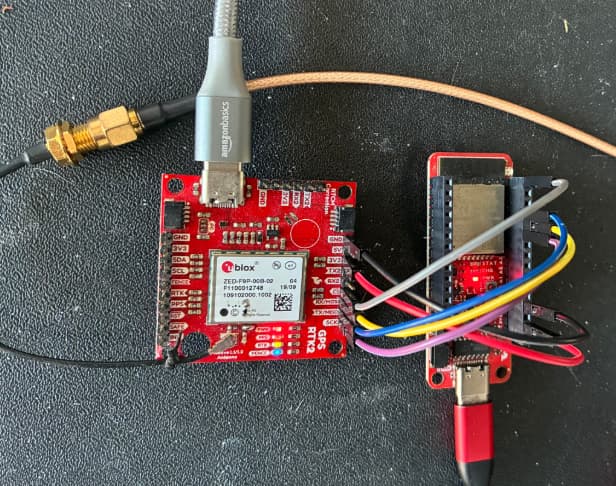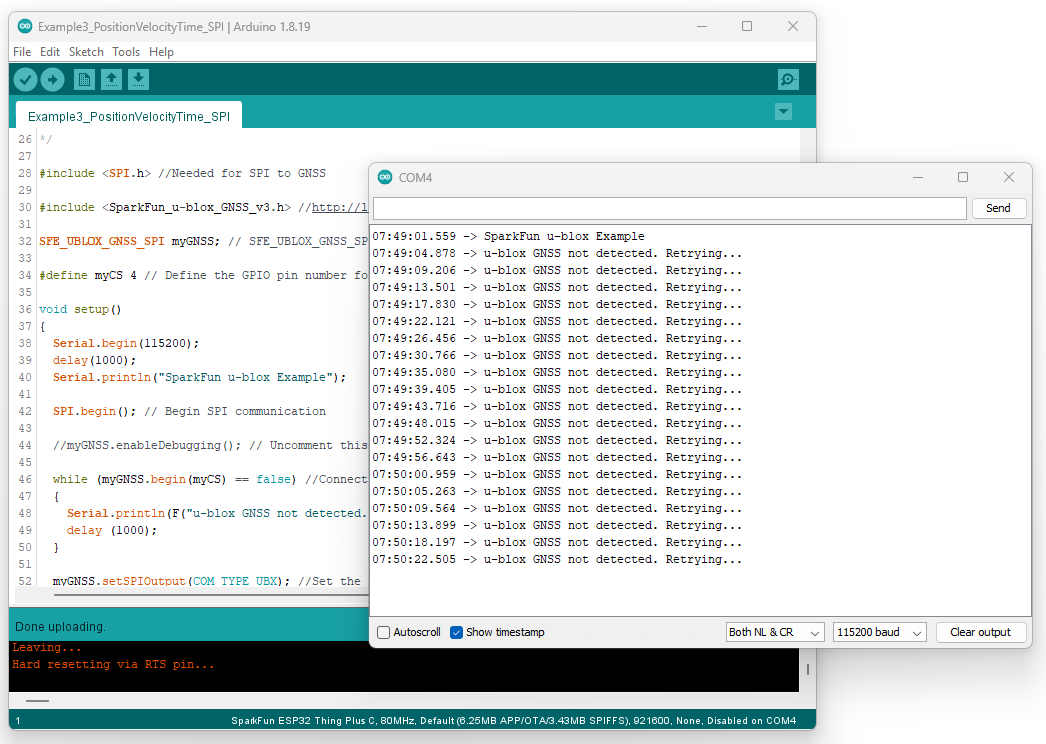Dear Sparkfun
since years we are successfully working with your products, mostly Thing Plus MCU boards and also GPS with ZED-F9R.
with that setup in the end we are mostly able to work how we need (SPI interface between the two and also a third Dual-port shield parallel on SPI).
In last months we wanted to start use also the other variant of ZED-F9P.
so ordered two board (GPS-16481) and after a brief setup already stumble in SPI problems:
I soldered the DSEL jumper and connected all the SPI lines, also update all the ZED-F9P firmware via U-Center.
anyway in the end only one of the two works via SPI, the second doesn’t (maybe few time did..) but via I2C works fine.
Also checking in the forum find out that this was an issue (not sure if from Ublox or from your boards).
in the end thought that maybe just one of the two board was defective and so order two more (this time without SMA, GPS-15136).
unfortunately yet both of the two are showing the same SPI limitations, almost no one works as it should (also after firmware update and DSEL soldered..).
Now I want to know directly from you if you’re aware of these problems, if you already had debug it, if you maybe have made another labeling mistake on the board silkscreen or layout for SPI pins (like for the ZED-F9R, GPS-22660 or GPS-22693)
without only addressing it in the forum and not correcting on the product
(not so professional, it cost me 2 x PCB design by the way).
Anyway before starting some claim or warranty procedure, hope you maybe can better address this point.
Thanks
Regards











